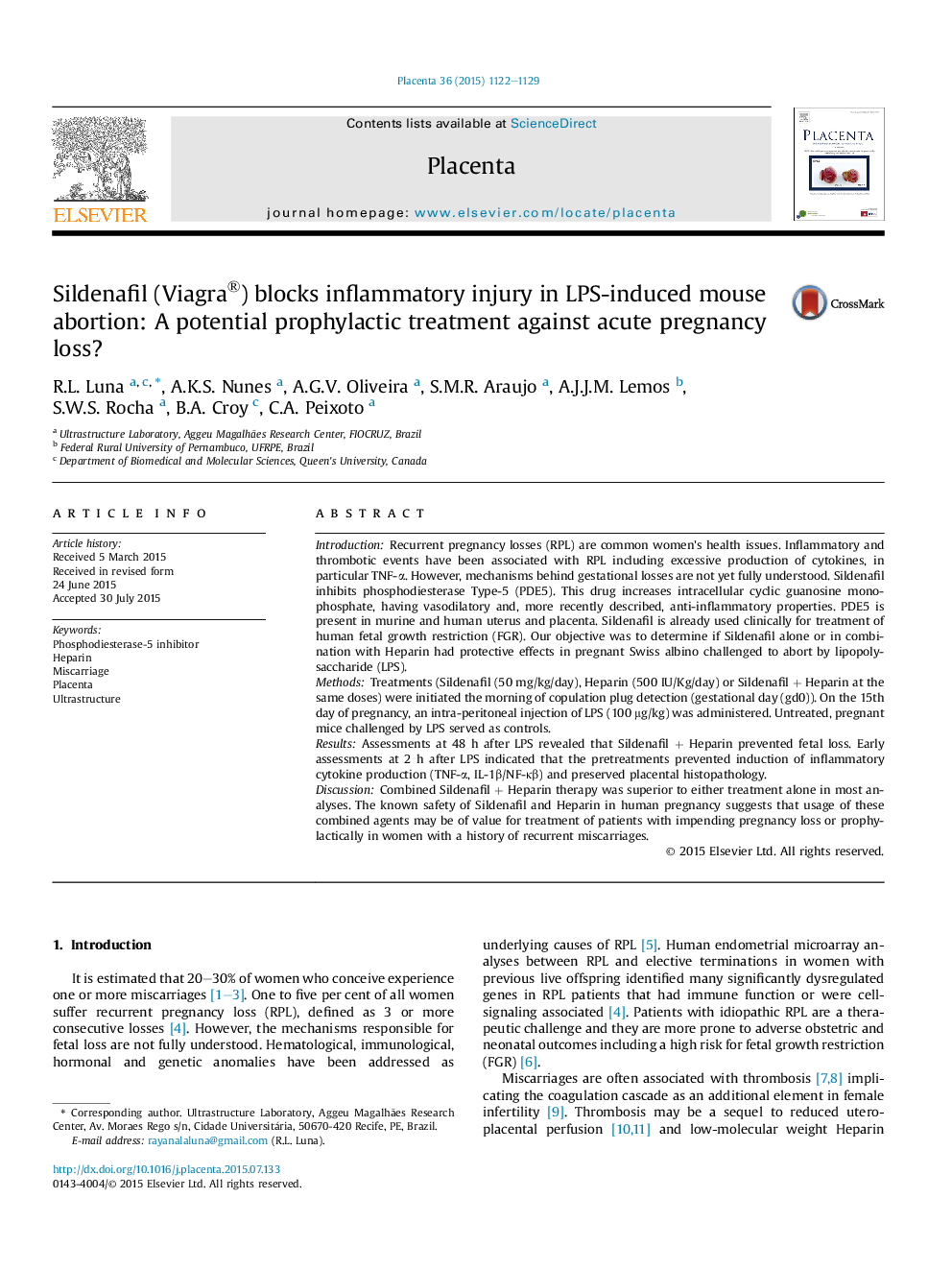| Article ID | Journal | Published Year | Pages | File Type |
|---|---|---|---|---|
| 2788477 | Placenta | 2015 | 8 Pages |
•Actions of LPS were significantly reduced in the pregnancies treated with Sil.•Sil or Sil + Hep showed well-preserved morphology and cellular ultrastructure.•High TNF-α/IL-1β were not found in all treated groups especially in Sil + Hep group.•Sil is superior to Hep in inhibiting NF-κB phosphorylation and nuclear translocation.
IntroductionRecurrent pregnancy losses (RPL) are common women's health issues. Inflammatory and thrombotic events have been associated with RPL including excessive production of cytokines, in particular TNF-α. However, mechanisms behind gestational losses are not yet fully understood. Sildenafil inhibits phosphodiesterase Type-5 (PDE5). This drug increases intracellular cyclic guanosine monophosphate, having vasodilatory and, more recently described, anti-inflammatory properties. PDE5 is present in murine and human uterus and placenta. Sildenafil is already used clinically for treatment of human fetal growth restriction (FGR). Our objective was to determine if Sildenafil alone or in combination with Heparin had protective effects in pregnant Swiss albino challenged to abort by lipopolysaccharide (LPS).MethodsTreatments (Sildenafil (50 mg/kg/day), Heparin (500 IU/Kg/day) or Sildenafil + Heparin at the same doses) were initiated the morning of copulation plug detection (gestational day (gd0)). On the 15th day of pregnancy, an intra-peritoneal injection of LPS (100 μg/kg) was administered. Untreated, pregnant mice challenged by LPS served as controls.ResultsAssessments at 48 h after LPS revealed that Sildenafil + Heparin prevented fetal loss. Early assessments at 2 h after LPS indicated that the pretreatments prevented induction of inflammatory cytokine production (TNF-α, IL-1β/NF-κβ) and preserved placental histopathology.DiscussionCombined Sildenafil + Heparin therapy was superior to either treatment alone in most analyses. The known safety of Sildenafil and Heparin in human pregnancy suggests that usage of these combined agents may be of value for treatment of patients with impending pregnancy loss or prophylactically in women with a history of recurrent miscarriages.
